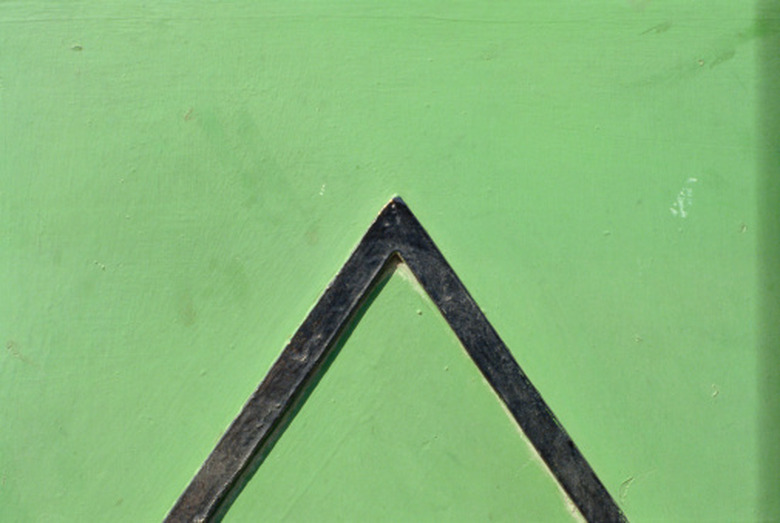Instructions For Using A General Tools 17 Square Head Protractor
The General Tools 17 Square Head protractor is an inexpensive protractor that you can use to measure angles from zero to 180 degrees. The protractor has angles from zero to 180 degrees etched in both directions on the head and a 6-inch movable arm that allows you to measure acute and obtuse angles, set bevels or transfer angles. The arm locks into place with a knurled thumb nut, allowing you to accurately gauge an angle's measurement.
Step 1
Loosen the nut in the center of the protractor arm.
Step 2
Place the head of the protractor on one leg of the angle. The protractor's nut should be at the angle joint.
Step 3
Rest the adjustable protractor arm on the other leg of the angle to be measured.
Step 4
Tighten the nut in the center of the arm.
Step 5
Read the angle measurement on the head of the protractor.
TL;DR (Too Long; Didn't Read)
The numbers read in two directions so that you don't have to worry about which side of the protractor to use. However, double-check that you are reading the right number; angles that are greater than a right angle should read 91 to 180 degrees and angles that are smaller than a right angle should read 0 to 89 degrees.
References
Cite This Article
MLA
Ellen, Stephanie. "Instructions For Using A General Tools 17 Square Head Protractor" sciencing.com, https://www.sciencing.com/instructions-for-using-a-general-tools-17-square-head-protractor-12563819/. 25 September 2017.
APA
Ellen, Stephanie. (2017, September 25). Instructions For Using A General Tools 17 Square Head Protractor. sciencing.com. Retrieved from https://www.sciencing.com/instructions-for-using-a-general-tools-17-square-head-protractor-12563819/
Chicago
Ellen, Stephanie. Instructions For Using A General Tools 17 Square Head Protractor last modified March 24, 2022. https://www.sciencing.com/instructions-for-using-a-general-tools-17-square-head-protractor-12563819/
